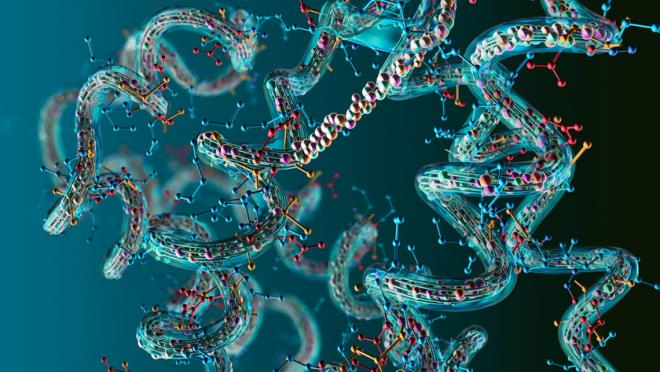
A study led by Dr. Gabor Kovacs at the Krembil Brain Institute revealed new insights into the mechanism underlying Lewy body disorders. These disorders encompass Parkinson disease and dementia with Lewy bodies—two of the most prevalent neurodegenerative diseases.
“Lewy body disorders can lead to a wide range of symptoms, including movement problems, cognitive decline and psychiatric conditions. However, the reason for this symptom variability is unclear. New findings from our lab suggest that the alpha-synuclein protein holds the key to understanding these disorders,” says Dr. Ivan Martinez‑Valbuena, the first author of the study and a postdoctoral researcher in Dr. Kovacs’ laboratory.
Alpha-synuclein (αSyn) is a protein that is present in the healthy brain, where it plays a role in the release of neurotransmitters. In Lewy body disorders, αSyn becomes misfolded and clumps together to form aggregates that interfere with normal brain function and lead to the death of nerve cells.
“Previous work has shown that the amounts of misfolded αSyn deposited in the brain cannot fully explain clinical features. Here, we explored whether different forms of the protein may contribute to the symptoms that we see in the clinic,” adds Dr. Martinez‑Valbuena.
The researchers used detailed neuropathological and biochemical examinations and protein profiling to explore the characteristics of αSyn in different patients with Lewy body disorders and in different brain regions.

Proteins are made of strands of amino acids (illustrated above) that fold into intricate three-dimensional shapes. When certain proteins fold incorrectly, they can cause diseases such as Lewy body disorders and Creutzfeldt-Jakob disease.
“αSyn can misfold in different ways, and the protein’s shape determines its seeding ability—how easily it can convert nearby ‘healthy’ proteins to misfold and spread throughout the brain,” says Dr. Kovacs, the senior author of the study and a Senior Scientist at the Krembil Brain Institute. “In a general sense, we explored whether we can link clinical features of Lewy body disorders to the type of misfolded αSyn.”
The researchers used a highly sensitive assay called real-time quaking-induced conversion (RT-QuIC) to measure the seeding ability of different types of αSyn. They characterized αSyn in post-mortem tissues from eight brain regions originating from 30 individuals with Lewy body disorders.
The team found a connection between the brain regions with the most aggressive forms of αSyn—those with the greatest seeding ability—and the symptoms experienced by patients. For example, patients with aggressive species of αSyn in the hippocampus—a region involved in learning and memory—had mainly cognitive symptoms. Conversely, when aggressive forms of αSyn were found in the substantia nigra—a region that helps control movements—motor symptoms were more common.
The team also found that the αSyn seeding ability was linked to the speed at which the disease progressed. For example, individuals with the most aggressive forms of αSyn in the substantia nigra had rapid onset disease and developed advanced symptoms in less than three years from diagnosis.
“Our findings suggest that new therapeutic strategies should consider a variety of differently folded αSyn species, rather than a single species,” concludes Dr. Kovacs, who is also a Professor in the Department of Laboratory Medicine and Pathobiology and a Principal Investigator at the Tanz Centre for Research in Neurodegenerative Diseases at the University of Toronto.
“Targeting the more aggressive types of αSyn that are present in individuals’ brains could lead to more effective and tailored treatments.”
This work was supported by the Edmond J. Safra Philanthropic Foundation, the Krembil Foundation, the Rossy Foundation, the Maybank Foundation, the Blidner Family Foundation, the Canada Foundation for Innovation, the Ontario Research Fund, the Spanish Ministry of Science Innovation and Universities, and the UHN Foundation. The authors would also like to thank the patients and their families for donating the tissue samples used in this study—this work would not have been possible without their contributions.
Martinez-Valbuena I, Swinkin E, Santamaria E, Fernandez-Irigoyen J, Sackmann V, Kim A, Li J, Gonzalez-Latapi P, Kuhlman G, Bhowmick SS, Visanji NP, Lang A, Kovacs GG. α-Synuclein molecular behavior and nigral proteomic profiling distinguish subtypes of Lewy body disorders. Acta Neuropathol. 2022 Aug;144(2):167-185. doi: 10.1007/s00401-022-02453-0.




